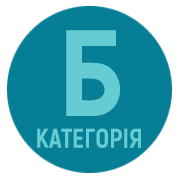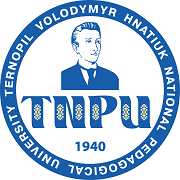ЛЕКСИЧНЕ РІЗНОМАНІТТЯ У ВИБРАНИХ АНГЛІЙСЬКИХ РОМАНАХ XVIII СТОЛІТТЯ
Ключові слова:
лексичне розмаїття, лексичне багатство, словниковий запас, лексична мінливість, TTR, LTR, ранні романи англійською мовоюАнотація
Cтаття присвячена проблемі вимірювання лексичного розмаїття в творах Семюела Річардсона, Генрі Філдінга і Лоренса Стерна. Три автори представляють різні літературні стилі. Їх романи були написані в той же історичний період, тому порівняння є можливим. Лексична різноманітність вимірювалась за допомогою систем TTR і LTR на нормованих зразках з 6 романів. Результати показують, що стиль Стерна є найрізноманітнішим з точки зору функції при аналізі. Крім того, твори Річардсона включають дещо вищий рівень лексичного розмаїття, ніж романи Генрі Філдінга, хоча відмінності між цими двома авторами невеликі. Крім того, результати не виявили будь-яких важливих пропорційних відмінноісей між оцінками за допомогою TTR і LTR і необхідності додаткових досліджень для вирішення цієї проблеми.
Посилання
Klee, T. Developmental and diagnostic characteristics of quantitative measures of children’s language production. “Topics in Language Disorders” 12(2), 1992, pp. 28–41.
Snow, C. E. Change in child language and child linguistics. In: Coleman, H., Cameron, L. (eds.) Change and Language, Clevedon: Multilingual Matters, 1998, pp. 75–88.
Durán, P., Malvern, D., Richards, B., Chipere, N. Developmental trends in lexical diversity. “Applied Linguistics” 25(2), 2004, pp. 220–242.
Johansson, V. Lexical diversity and lexical density in speech and writing: a developmental perspective. “Working Papers in Linguistics” 53, 2009, pp. 61–79.
Broeder, P., Extra, G., van Hout, T. Measuring lexical richness and diversity in second language research. “Polyglot” 8, 1986, pp. 1–16.
Johansson, V. Word frequencies in speech and writing: a study of expository discourse. In: Working Papers in Developing Literacy across Genres, Modalities, and Languages, vol. I, Tel Aviv, 1999, pp. 182–198.
Lieven, E. V. Conversations between mothers and young children: individual differences and their possible implication for the study of language learning. In: Trott, K., Dobbinson, S., Griffiths, P. (eds.) The Child Language Reader, London and New York: Routlege, 2004, pp. 11-20.
Bates, E., Bretherton, I., Snyder, L. From First Words to Grammar: Individual Differences and Dissociable Mechanisms, 20, Cambridge: Cambridge Universi- ty Press, 1991.
Hess, C. W., Haug, H. T., Landry, R. G. The reliability of type-token ratios for the oral language of school age children. «Journal of Speech, Language, and Hearing Research» 32(3), 1989, pp. 536–540.
Guiraud, P. Problèmes et Méthodes de la Statistique Linguistique. Presses Universitaires de France, 1960.
Carroll, J. B. Language and Thought. Englewood Cliffs, NJ: Prentice-Hall, 1964.
Herdan, G. Type-token Mathematics, vol. 4., Mouton, 1960.
Sichel, H. S. Word frequency distributions and type-token characteristics. “Mathematical Scientist” 11(1), 1986, pp. 45–72.
McCarthy, P. M., Jarvis, S. Vocd: a theoretical and empirical evaluation. “Language Testing” 24(4), 2007, pp. 459–488.
D. Crystal, Profiling Linguistic Disability, London: Edward Arnold, 1992.
Daller, H., van Hout, R., Treffers-Daller, J. Lexical richness in the spontaneous speech of bilinguals. “Applied Linguistics” 24(2), 2003, pp. 197–222.
Fradis, A., Mihailescu, L., Jipescu, I. The distribution of major grammatical classes in the vocabulary of Romanian aphasic patients. “Aphasiology” 6(5), 1992, pp. 477–489.
Read, J. Assessing Vocabulary. Cambridge: Cambridge University Press, 2000.
Malvern, D. D., Richards, B. J., Chipere, N., Durán, P. Lexical Diversity and Language Development. Houndmills, Hampshire UK: Palgrave Macmillan, 2004.
Tweedie, F. J., Baayen, R. H. How variable may a constant be? Measures of lexical richness in perspective. “Computers and the Humanities” 32(5), 1998, pp. 323–352.
Strömqvist, S., Johansson, V., Kriz, S., Ragnarsdottir, H., Aisenman, R., Ravid, D. Toward a cross-linguistic comparison of lexical quantain speech and writing. “Written Language & Literacy” 5(1), 2002, pp. 45–67.
Le Normand, M.-T., Parisse, C., Cohen, H. Lexical diversity and productivity in French preschoolers: developmental, gender and sociocultural factors. “Clinical Linguistics & Phonetics” 22(1), 2008, pp. 47–58.
Halliday, M. A. Spoken and Written Language. 1989.
Ure, J., Ellis, J. Register in descriptive linguistics and linguistic sociology. In: Uribe-Villegas, O. (ed.) Issues in Sociolinguistics, The Hague: Mouton, 1977, pp. 197–243.
Sadeghi, K., Dilmaghani, S. K. The relationship between lexical diversity and genre in Iranian EFL learners’ writings. “Journal of Language Teaching and Re- search” 4(2), 2013, pp. 328-334.
Watt, I. P. The Rise of the Novel: Studies in Defoe, Richardson and Fielding. Berkeley and Los Angeles, California: University of California Press, 2001.
Python Software Foundation, Python Language Reference (version 3.4.3) [computer software], 2016.
Bird, S., Klein, E., Loper, E. Natural Language Processing with Python. O’Reilly Media, Inc., 2009.
Hüning, M. TextSTAT — Simple Text Analysis Tool (version 3.0) [computer software]. Berlin: Freie Universität, 2015.
R Development Core Team, R: A Language and Environment for Statistical Computing (version 3.0.3) [computer software]. Vienna, Austria, 2013.










